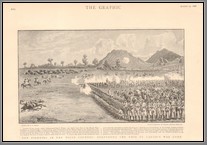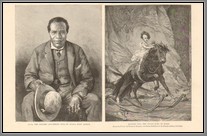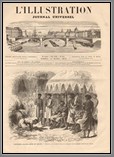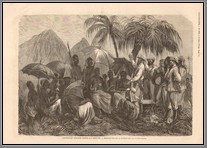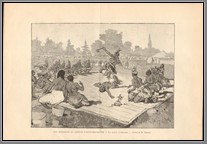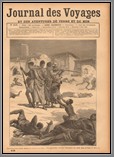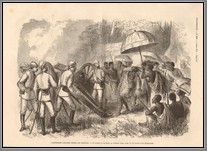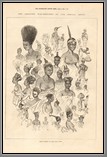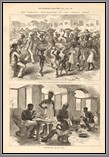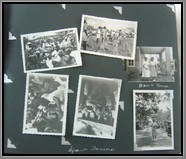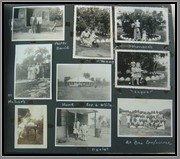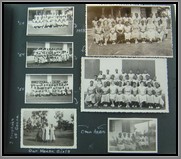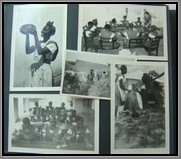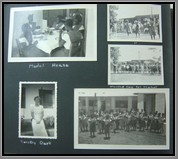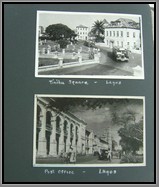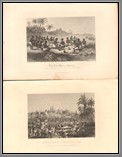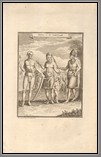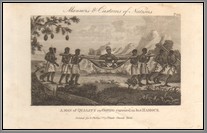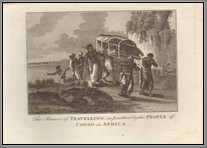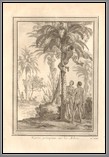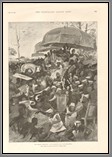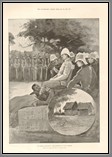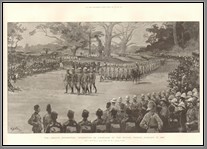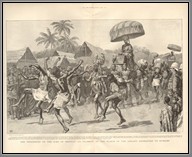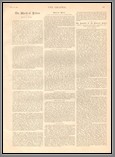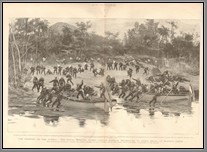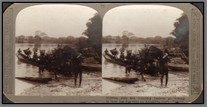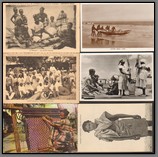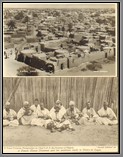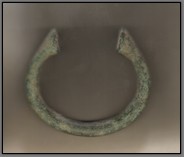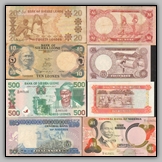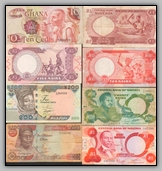A collection of 10 English illustrated pages on the wars in Nigeria against the Aros, the Emir of Kano, the Emir of Lapaie, Onitcha-Ugbo and Ja-Ja King of Opobo, 1888-1904. B
Price: $300.00
Note: There were major internal changes in Nigeria in the 19th century. In 1804, Usuman dan Fodio (1754-1817), a Fulani and a pious Muslim, began a holy war to reform the practice of Islam in the north. 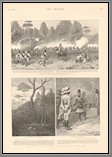 BRA 088
BRA 088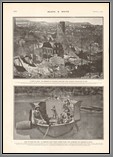 BRA 088He soon conquered the Hausa city-states, but Bornu, led by Muhammad al-Kanemi (also a Muslim reformer) until 1835, maintained its independence. In 1817, Usuman dan Fodio’s son, Muhammad Bello established a state centered at Sokoto, which controlled most of Northern Nigeria until the coming of the British (1900-1906). Under both Usuman dan Fodio and Muhammad Bello, Muslim culture, and also trade, flourished in the Fulani empire. In Bornu, Muhammad al-Kanemi was succeeded by Uma (reigned 1835-1880), under whom the empire disintegrated.
BRA 088He soon conquered the Hausa city-states, but Bornu, led by Muhammad al-Kanemi (also a Muslim reformer) until 1835, maintained its independence. In 1817, Usuman dan Fodio’s son, Muhammad Bello established a state centered at Sokoto, which controlled most of Northern Nigeria until the coming of the British (1900-1906). Under both Usuman dan Fodio and Muhammad Bello, Muslim culture, and also trade, flourished in the Fulani empire. In Bornu, Muhammad al-Kanemi was succeeded by Uma (reigned 1835-1880), under whom the empire disintegrated.
Britain entered the region initially to stamp out the slave trade. In 1817 a long series of civil wars began in the Oyo Empire which lasted until 1893 when Britain intervened. To stop the slave trade, Britain annexed Lagos in 1861. Sir George Goldie gained control of all the British firms trading on the Niger, and in the 1880’s he took over two French companies active there and signed treaties with numerous African leaders. Largely because of Goldie’s efforts, Great Britain was able to claim Southern Nigeria at the Conference of Berlin held in 1884-1885.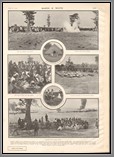 BRA 088
BRA 088 BRA 088
BRA 088
In the following years, the British established their rule in SW Nigeria, partly by signing treaties (as in the Lagos hinterland) and partly by using force (as at Benin in 1897). Jaja, a leading African trader based at Opobo in the Niger delta and strongly opposed to European competition, was captured in 1897 and deported. Goldie’s firm was given a royal charter in 1886 and established the Royal Niger Company, to administer the Niger River and Northern Nigeria. It antagonized Europeans and Africans alike by it monopoly of trade on the Niger, although it was not sufficiently powerful enough to gain effective control over Northern Nigeria, which was also sought by the French.
In 1900 the Royal Niger Company’s charter was revoked and British forces under Frederick Lugard began to conquer the north,  BRA 088taking Sokoto in 1903. By 1906, Britain controlled Nigeria, which was divided into the Colony (ie. Lagos) and Protectorate of Southern Nigeria and the Protectorate of Northern Nigeria. In 1914 the two regions were amalgamated and the Colony and Protectorate of Nigeria was established.
BRA 088taking Sokoto in 1903. By 1906, Britain controlled Nigeria, which was divided into the Colony (ie. Lagos) and Protectorate of Southern Nigeria and the Protectorate of Northern Nigeria. In 1914 the two regions were amalgamated and the Colony and Protectorate of Nigeria was established.
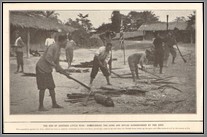 BRA 088 BRA 088 | 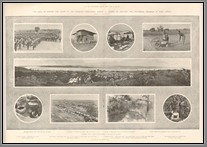 BRA 088 BRA 088 | 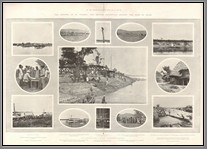 BRA 088 BRA 088 | 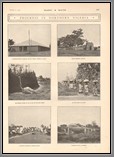 BRA 088 BRA 088 |

